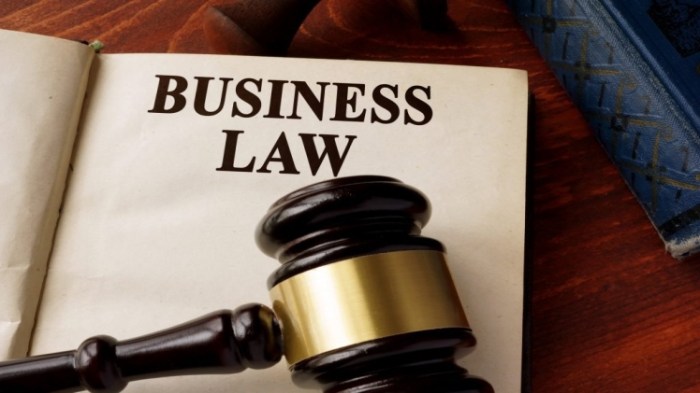In the aftermath of a car accident, determining fault is crucial for assigning liability and seeking compensation. This comprehensive guide will delve into the legal framework, evidence gathering, and expert analysis involved in proving fault in a car accident case. By understanding the principles and strategies Artikeld here, you can effectively navigate the legal process and advocate for your rights.
From gathering witness statements and police reports to analyzing accident reconstruction data, this guide will equip you with the knowledge and tools necessary to establish fault and pursue a favorable outcome.
Proving fault in a car accident case can be challenging, especially when there are conflicting accounts or insufficient evidence. Understanding your legal rights is crucial to ensure you receive fair compensation.
Car accident legal rights provide guidance on how to protect your interests, including obtaining legal representation, filing a claim, and negotiating a settlement.
Establishing fault through witness statements, police reports, and expert testimony is essential for a successful outcome in proving fault in a car accident case.
1. Legal Framework for Proving Fault

Establishing fault in a car accident case requires an understanding of the legal principles governing negligence and liability.
Negligence refers to the failure to exercise reasonable care, resulting in harm to another. In car accident cases, negligence can be established by proving the following elements:
- Duty of care: The defendant owed a duty of care to the plaintiff.
- Breach of duty: The defendant breached their duty of care by acting or failing to act in a way that a reasonable person would not.
- Causation: The defendant’s breach of duty directly and proximately caused the plaintiff’s injuries.
- Damages: The plaintiff suffered damages as a result of the defendant’s negligence.
The burden of proof in a car accident case rests on the plaintiff, who must prove each element of negligence by a preponderance of the evidence.
Proving fault in a car accident case is crucial for determining liability and compensation. The Car accident settlement process involves gathering evidence, such as police reports, witness statements, and medical records.
Establishing fault helps determine who is responsible for the accident and the extent of their liability.
This information is essential for negotiating a fair settlement or pursuing legal action to recover damages.
Common Defenses Raised by Defendants, Proving fault in a car accident case
- Contributory negligence: The plaintiff’s own negligence contributed to the accident.
- Comparative fault: The plaintiff’s negligence was greater than the defendant’s, reducing the plaintiff’s recovery.
- Assumption of risk: The plaintiff voluntarily assumed the risk of injury by engaging in a dangerous activity.
- Statute of limitations: The plaintiff failed to file a lawsuit within the time limit set by law.
2. Gathering Evidence to Establish Fault
Gathering evidence is crucial for proving fault in a car accident case. The following checklist provides essential evidence to collect:
- Police report: Contains details of the accident, including witness statements and diagrams.
- Witness statements: Accounts from individuals who witnessed the accident.
- Medical records: Documenting injuries sustained by the plaintiff.
- Vehicle damage reports: Assessing the extent of damage to both vehicles.
- Photographs of the accident scene: Capturing the physical evidence.
- Cell phone records: Establishing if the defendant was distracted at the time of the accident.
Preserving and documenting evidence is equally important. Take photographs, obtain witness contact information, and keep all medical records organized.
3. Analyzing Evidence to Determine Fault: Proving Fault In A Car Accident Case
Experts play a crucial role in analyzing evidence and determining fault. The following table Artikels different types of experts and their areas of specialization:
| Expert Type | Area of Specialization |
|---|---|
| Accident reconstructionist | Recreating the accident to determine the sequence of events and establish fault. |
| Medical expert | Assessing the nature and extent of injuries, as well as causation. |
| Automotive engineer | Evaluating vehicle damage and identifying mechanical failures. |
| Traffic engineer | Analyzing traffic patterns and road conditions to determine contributing factors. |
Accident reconstruction techniques, such as computer simulations and crash tests, can provide valuable insights into the cause of the accident.
4. Establishing Liability Based on Fault

Liability refers to the legal responsibility for damages caused by a person’s actions. In car accident cases, liability is typically determined based on fault.
Different degrees of liability exist:
- Negligence: The defendant is found to have breached their duty of care, resulting in the plaintiff’s injuries.
- Contributory negligence: The plaintiff’s own negligence contributed to the accident, reducing their recovery.
- Comparative fault: Both parties are found to be at fault, with the plaintiff’s recovery reduced in proportion to their degree of fault.
Establishing liability has legal consequences, including compensation for damages and potential criminal charges.
5. Proving Fault in Specific Accident Scenarios
Proving fault in a car accident case can vary depending on the specific scenario. The following table summarizes common accident scenarios and the specific evidence needed to prove fault:
| Accident Scenario | Evidence Needed to Prove Fault |
|---|---|
| Rear-end collision | Police report, witness statements, vehicle damage reports. |
| Intersection collision | Traffic light timing, witness statements, accident reconstruction analysis. |
| Pedestrian accident | Witness statements, photographs of the accident scene, medical records. |
| Hit-and-run | Witness statements, vehicle debris, surveillance footage. |
Hit-and-run cases present unique challenges in proving fault. Gathering witness statements and obtaining surveillance footage from nearby businesses or traffic cameras can be crucial.
Final Thoughts
Proving fault in a car accident case requires a thorough understanding of the legal principles, meticulous evidence gathering, and expert analysis. By following the steps Artikeld in this guide, you can effectively demonstrate fault, establish liability, and protect your legal interests.
Proving fault in a car accident case can be a complex and challenging process. If you’ve been involved in a car accident, it’s important to speak with a Car accident insurance claim lawyer to discuss your options.
An experienced lawyer can help you navigate the legal process and ensure that you receive the compensation you deserve.
Proving fault in a car accident case can be difficult, but it’s not impossible. With the right legal representation, you can increase your chances of a successful outcome.
Answers to Common Questions
What is the burden of proof in a car accident case?
The plaintiff (person filing the lawsuit) typically bears the burden of proof, meaning they must provide evidence to support their claim of fault.
What are some common defenses raised by defendants in car accident cases?
Common defenses include contributory negligence, comparative fault, and sudden emergency.
How can I preserve evidence after a car accident?
Take photos of the accident scene, obtain witness contact information, and keep all medical records and bills related to your injuries.




